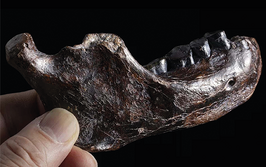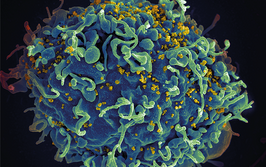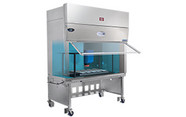Biosensor HIV Test Delivers Results in 15 Minutes
Nanomechanical platform detects early-stage infection with high sensitivity and broad subtype coverage
| 3 min read | News

Credit: HIV-infected H9 T Cell by NIAID, via Flickr CC BY
A new nanomechanical biosensor, capable of detecting HIV-1 p24 antigen with high sensitivity and speed, could enable point-of-care (POC) diagnostics that rival current lab-based tests.
The new platform uses functionalized silicon microcantilevers to measure the deflection caused by antigen-antibody binding – a technique that translates molecular recognition into measurable mechanical motion using fluidic-atomic force microscopy (f-AFM). The sensor demonstrated detection limits as low as 1 femtogram per millilitre in serum and provided results within 15 minutes.
Early detection of HIV remains a global health priority. While fourth-generation lab-based assays can detect both antibodies and the p24 antigen within weeks of exposure, they remain inaccessible in many settings due to their cost, infrastructure requirements, and slow turnaround. Existing POC tests are mostly limited to detecting antibodies, which appear later in the infection timeline.
“Our platform demonstrated remarkable sensitivity, detecting p24 at concentrations as low as 100 fg/mL in solution and 1 pg/mL in human serum,” the researchers write. The platform also showed “quantitative response over several orders of magnitude”.
To overcome the challenge posed by HIV’s genetic diversity, the team used a combination of two broadly cross-reactive monoclonal antibodies – ANT-152 and C65690M. Together, these enabled reliable detection of p24 from all 60 tested HIV-1 isolates, which spanned subtypes A, B, C, D, CRF01-AE, and CRF02-AG – together representing over 70 percent of global HIV-1 strains.
To move toward practical deployment, the team adapted the cantilever system for use with a biofunctionalized MOSFET (metal-oxide-semiconductor field-effect transistor) device, providing an electronic output suitable for handheld applications. The MOSFET-based readout matched the performance of the f-AFM method, detecting p24 in serum at concentrations as low as 0.1 pg/mL within three minutes.
“Our goal is to translate this into a multiplexed POC diagnostic capable of simultaneously detecting HIV, HBV, and HCV antigens,” the authors conclude. Such a platform could be especially impactful in low-resource settings where co-infections are prevalent and access to timely diagnostics remains limited.
While promising, the authors note challenges remain, including reduced sensitivity in anticoagulant-treated blood samples and the need for validation using clinical specimens. Nonetheless, the study offers a compelling proof of concept for a low-cost, rapid diagnostic with potential applications across infectious disease monitoring and public health interventions.
“We hope this technology will lead to the development of new point-of-care diagnostics for HIV to improve patient health and help bring an end to this epidemic,” said study co-author Judd Hultquist in a Northwestern University release.

















